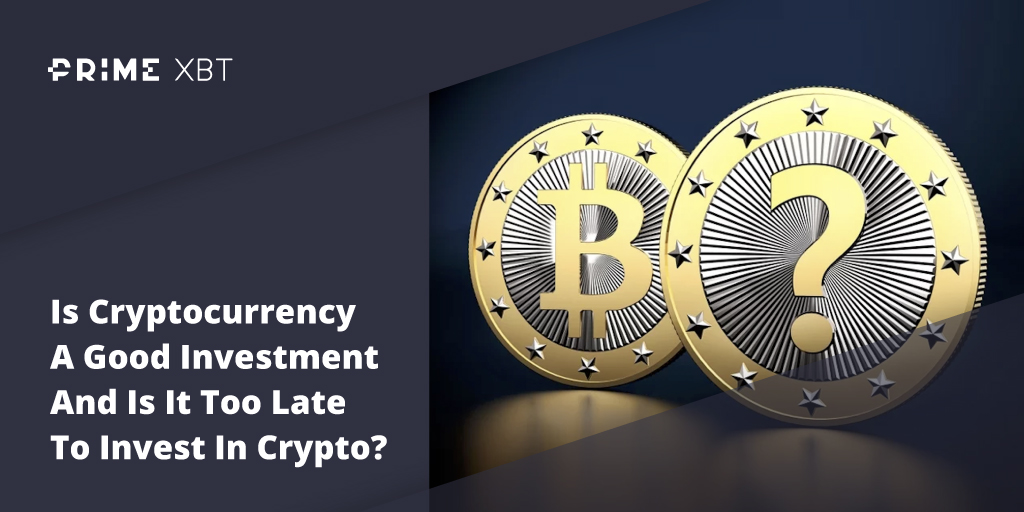At first glance, decentralized finance, called DeFi for short, is the next big thing in finance, ready to replace traditional banks and financial services that have been around for centuries.
What users have failed to realize is that without banks involved, the risk associated with doing business increases – a risk that rarely exists around the traditional banking sector. And while DeFi is surely promising and innovative as a whole, recent hacks and exploits resulting in millions lost are a prime example as to why the technology in the DeFi sector might still be too young and therefore too risky to invest too much capital into.
Introduction To DeFi Hacks, DeFi Exploits, And How To Avoid Risks In DeFi
The month of May 2021 was absolutely brutal in terms of the amount of total DeFi exploits resulting in millions of investors dollars in capital being flushed down the drain.
Several DeFi protocols were hit with high-profile DeFi hacks that not only hurt investors in their wallets, but crushed the reputations of the protocols that were left vulnerable. In most cases the related LP token was the target, but in many cases ETH tokens were also taken.
The negative sentiment surrounding the exploits and the liquidity shock helped in part to cause the crypto market crash that took Bitcoin and Ethereum down by more than 50% per coin.

Crime And Fraud In The DeFi Ecosystem
In one example alone, a project admin account became compromised and along with it the private keys, and more than $80 million was stolen. The sum of funds stolen from DeFi exploits is increasing by the day, reaching millions stolen from DeFi exploits in 2020 and growing rapidly since.
Another example saw $45 million stolen where the compromise was to reissue new tokens to all affected users, making the original token worthless to anyone including the hacker. The same week, vulnerabilities in another DeFi software protocol saw a different kind of attack. These attacks range from flash loan attacks, to re-entry attacks, to the distribution of malicious code and more. The exploit means used depends on the DeFi protocol itself and the hacker’s motives and methodology, but the risks posed to DeFi users remains the same.
One project’s Ether pool was drained and more than $10 million in ETH tokens were stolen in the process as part of the hack, proving that regardless of the DeFi protocol. DeFi risks remain high.
Is DeFi Still Too Risky?
DeFi platforms are now abundant, and users are flocking to them without fully understanding the risks associated with the emerging technology and sector of the cryptocurrency asset class.
Not only are there exploits, hacks, and more, but there are fake projects popping up left and right with only the intention of scamming users with an unexpected rug pull. The problem is growing as more capital flows into the category, and is a problem worth solving to build a brighter future of decentralized finance.
A Guide To Risks In DeFi
Before connecting your cold storage or hot wallet to the hottest DEX like Uniswap to lock up your tokens in smart contracts to earn an APY on coins, access flash loans, and more, be certain to understand all the various DeFi risks and how to avoid them if possible.
Let the following guide act as a reference tool for the many security risks and loopholes associated with DeFi.

Types Of DeFi Risks And The Most Popular Hacking Methods
Let the following list act as a reference tool for the many security risks and loopholes associated with DeFi.
Smart Contract Risks
Smart contracts are lines of code added to crypto token transactions but are highly prone to attack, errors, bugs, and more that can result in capital loss. Fees associated with erroneous transactions are not refundable, and over time can add up to large losses as the price of cryptocurrencies increase.
Front-running, insufficient gas griefing, integer issues, reentrancy and other highly technical buzzwords plague smart contract problems.
Hardware Risks
Hardware risks refer to the risks associated with the cold storage wallet being used to access any DeFi protocols or networks. Incompatibility issues, power outages, glitching, and worse are associated with hardware wallets.
There are also risks associated with hardware wallets that crypto investors wouldn’t see coming. For example, a wallet company leaked the details and personal addresses of users who bought cold storage wallets, potentially creating risk of personal harm or safety issues due to the leak.
Software Risks
Software risks are also highly technical and the security or a protocol matters the most here. A DDoS attack, injection, or overflow can be crushing to these decentralized software systems, as these exploits have shown.
Injection Risks
Injection risks are often the worst associated with DeFi, as it happens when a user can access and manage data using the command line or SQL database to access vulnerabilities that allow the attacker to change data in ways with unpredictable outcomes.
Financial Risks
The financial risks are a lot more obvious when it comes to DeFi, and we don’t mean losing money due to scams, hacks, exploits and otherwise. Financial risks are a very real risk associated with the price difference of locked tokens being offered up for liquidity provisioning.
When a user goes to withdraw tokens from a DeFi protocol, if the price per token has dropped while being locked up, they’ve suffered a loss due to the financial risk associated with DeFi. The risk versus reward is typically in favor of DeFi protocols due to high APYs and other features, but there’s no denying the risks are real.
Procedural Risks
Procedural risks in DeFi focus specifically on how users could be manipulated into using the protocol in ways that could hinder security efforts and bring vulnerabilities to light. Ensuring a reputable platform like Uniswap is selected, two-factor authentication is enabled, and software is fully up to date are ways that users can protect against these hidden procedural risks.
Technical Risks
Technical risks are associated with smart contracts, software, and hardware, however, there are more ways the technical process of connecting to DeFi protocols can also lead to further risk. For example, if a user doesn’t know what they’re doing and finds themselves on a fake version of a popular DEX, it could result in coins being stolen or being sent to a destination that’s unintended.
Without extensive technical skills, DeFi might not be right for everyone.

How To Manage DeFi Risks
Managing DeFi risks involves being ultra selective in which platforms to do business with and connect to. It is also important just like any type of investment to never invest more than one can comfortably afford to lose.
DeFi’s products and services mimicking traditional banking services like loans and interest accounts all without the need for detailed verification methods makes for a very appealing system. However, it gives the investor the illusion of the same type of safety and security that banks provide.
When something goes wrong at a big bank, there’s a branch manager to talk to and an 800 line to call for support. At a decentralized exchange, if you get scammed, hacked, or send your funds to the wrong place, it is only you who suffers and there’s no one you can turn to for help.
Keeping a backup of any private keys, and ensuring they cannot be compromised must be of the utmost importance. Strong personal operational security and a tight lip also might be considered. Simply put, never disclose to anyone ever that you hold any crypto, especially not DeFi tokens or you could inadvertently make yourself a target for hackers and scammers.
What To Expect In DeFi Vs CeFi In The Future?
The gap in the primary factors outlined above are bound to continue to widen exponentially, until the two services are no longer at all on the same playing field. At the current moment in time, DeFi is slightly dangerous from a technology perspective. If you don’t know what you are doing, there’s a lot of risk as even the likes of Mark Cuban recently found out when he was part of a large DeFi rug pull months ago.
CeFi will continue to die a slow death due to the changing of the guard that’s currently ongoing. Any traditional CeFi institutions will have no choice but to either begin or continue to further adopt cryptocurrency technologies like Bitcoin, Ethereum, or DeFi.
CeFi platforms like PayPal, Venmo, Cash App, and many more are all now offering cryptocurrencies as part of their products and services, and more. More will follow suit. Wall Street will be forced to tokenize stocks, commodities, and other financial products via smart contracts.
DeFi will continue to grow and explode as it has been, attracting more and more users of all kinds. Everyone from institutions to users in poor countries who don’t have access to normal banking services are interested in the booming sector.
There’s bound to be many more disasters along the way, many more bear markets in crypto, and more before DeFi ever becomes as widespread as CeFi. However, at one point typewriters dominated computers, but when a better technology comes along it is only a matter of time until it completely disrupts the existing technology, then replaces it.
DeFi vs CeFi: Which to Invest In?
So which is better, DeFi or CeFi? DeFi wins every time hands down, and there’s not a great way to invest in CeFi. You can invest in bank-related stocks, or keep your money in some kind of traditional bank account which adds to their bottom line. But with DeFi you can contribute direction to a protocol’s growth by investing in the asset. The higher prices the more users the protocol will attract, improving conditions like security and liquidity through network effect.
DeFi assets have already brought users astronomical gains, but the emerging technology is still very early and young. Investing now could be like investing in banks before they became what they are today. Some day when DeFi dominates the entire financial market, anyone who gets in now could end up wealthier than they could ever imagine.
At the same time, DeFi could go to zero as a speculative asset, in case of a situation where governments ban cryptocurrencies or some type of hack or rug pull situation like what happened to Mark Cuban.
Summary: Forget DeFi Platforms, Stake Crypto On PrimeXBT And Copy Trading
DeFi tokens have been soaring in value for over a year now, bringing tons of new participants to the crypto industry and to the DeFi sector itself. Buzz surrounding the subsection of the industry has become even more popular than Bitcoin or Ethereum itself, and is part of what’s driving up the value per ETH token also.
However, as time has proven, DeFi is still too risky at this point in time, especially when dealing with unproven decentralized protocols. With crypto working best without a third-party, it is rare to believe that in any scenario, working with banks is the safer option. Instead, searching for a reputable centralized platform to access DeFi protocols instead can make or break an investor’s bottom line.
The award-winning trading platform PrimeXBT is currently home to the copy trading ecosystem of products, most notably the copy trading module that connects followers with top ranked strategy managers on the fully transparent leaderboards.
Strategy managers do battle to rise the ranks and gain the most followers, in which they’ll earn a cut of the profit share of successful copied trades. Followers get to sit back and let the strategy manager do the technical analysis and footwork for them. All they have to do is pick and choose which strategy managers to follow.
At PrimeXBT, users can trade over 50 different CFDs, allowing them to go long or short crypto, forex, commodities, and stock indices like the Dow Jones, S&P 500, Nasdaq, and more. The list of crypto assets includes Bitcoin, Ethereum, Litecoin, and other mainstays, avoiding highly speculative DeFi coins for now.
The content provided here is for informational purposes only. It is not intended as personal investment advice and does not constitute a solicitation or invitation to engage in any financial transactions, investments, or related activities. Past performance is not a reliable indicator of future results.
The financial products offered by the Company are complex and come with a high risk of losing money rapidly due to leverage. These products may not be suitable for all investors. Before engaging, you should consider whether you understand how these leveraged products work and whether you can afford the high risk of losing your money.
The Company does not accept clients from the Restricted Jurisdictions as indicated in our website/ T&C. Some services or products may not be available in your jurisdiction.
The applicable legal entity and its respective products and services depend on the client’s country of residence and the entity with which the client has established a contractual relationship during registration.



